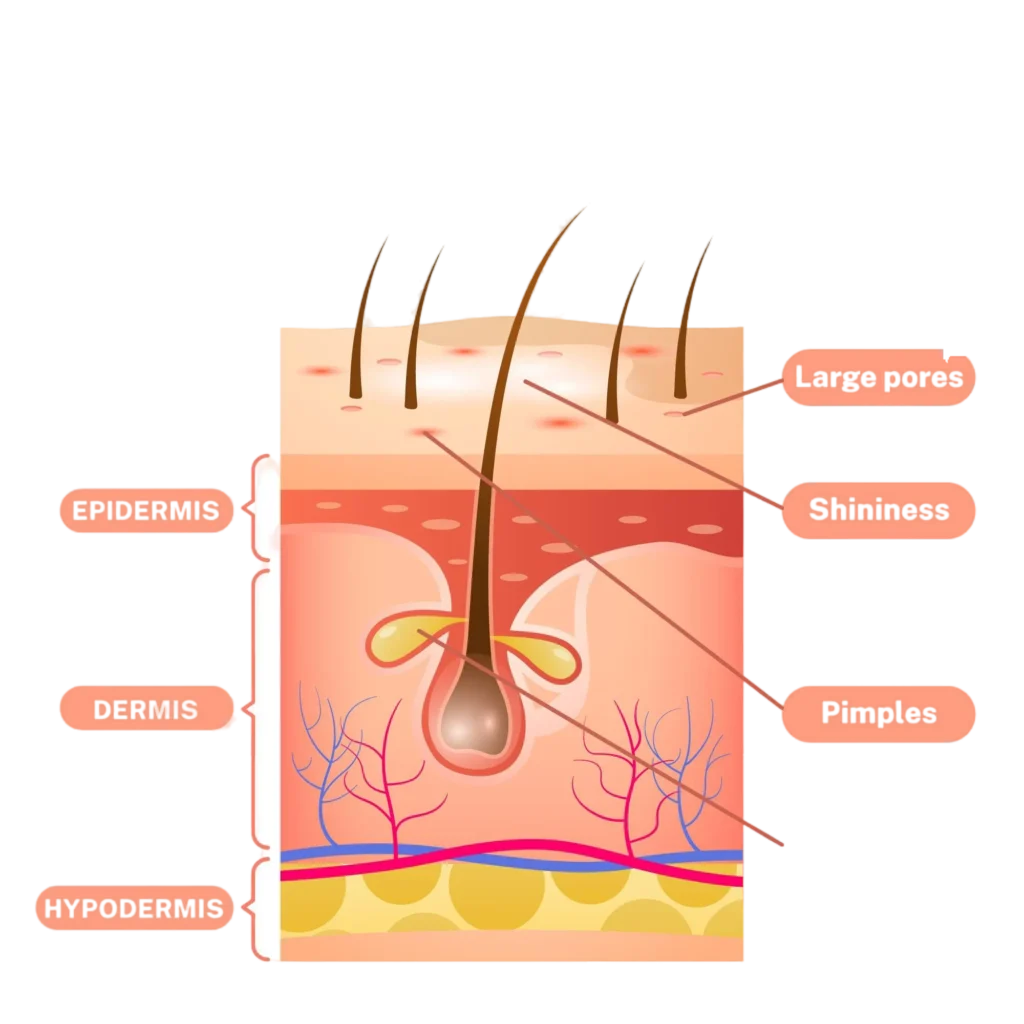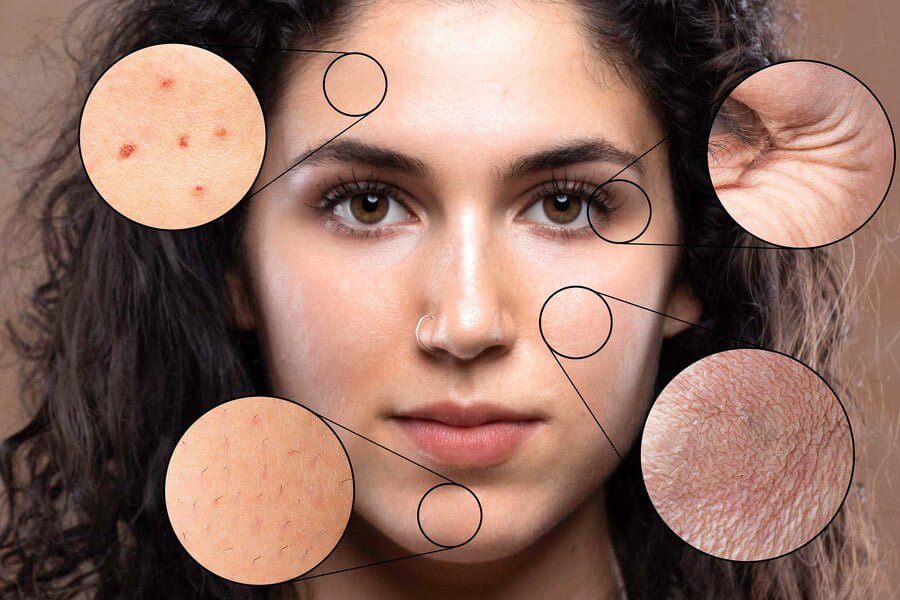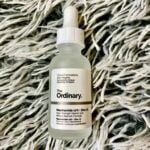Excess facial oil can be a frustrating and persistent problem, leading to shiny skin, clogged pores, and acne breakouts. If you’re tired of battling an oilyskin, complexion, you’re not alone. you can manage and reduce oiliness, achieving a balanced, healthy-looking complexion.

Table of Contents
Understanding the Causes of Oily Skin

Before diving into the solutions, it’s important to understand why your skin might be producing excess oil. Several factors contribute to oily skin:
- Genetics: Your genes play a significant role in determining your skin type. If your parents have oily skin, chances are you will too.
- Hormonal Changes: Hormones, particularly androgens, can increase oil production. This is why teenagers, pregnant women, and those undergoing hormonal changes often experience oily skin.
- Diet: Consuming a diet high in refined carbohydrates and sugars can trigger oil production.
- Over-Washing: Paradoxically, washing your face too often can strip it of natural oils, prompting your skin to produce even more oil to compensate.
- Incorrect Skincare Products: Using products that are too harsh or not suitable for your skin type can exacerbate oiliness.
Effective Strategies to Control Facial Oil

1. Choose the Right Cleanser
Using a gentle, foaming cleanser can effectively remove excess oil without stripping your skin of its natural moisture. Look for cleansers containing salicylic acid, benzoyl peroxide, or glycolic acid, which can help reduce oil and prevent breakouts.
2. Incorporate a Toner
A toner with ingredients like witch hazel or tea tree oil can help to balance your skin’s pH and reduce oil production. Avoid toners with high alcohol content as they can dry out your skin and lead to increased oil production.
3. Moisturize Wisely
Contrary to popular belief, even oily skin needs moisturizer. Opt for a lightweight, oil-free, non-comedogenic moisturizer that hydrates your skin without adding extra oil. Gel-based moisturizers can be particularly effective.
4. Use Oil-Absorbing Products
Incorporate products like oil-absorbing sheets and mattifying primers into your routine to control shine throughout the day. These products can help keep your skin looking fresh without clogging your pores.
5. Exfoliate Regularly
Regular exfoliation helps to remove dead skin cells that can clog pores and lead to increased oil production. Use a gentle exfoliator 2-3 times a week. Avoid harsh scrubs that can irritate your skin and cause more oil production.
6. Apply Clay Masks
Clay masks, particularly those containing kaolin or bentonite clay, can help to absorb excess oil and purify your skin. Use a clay mask once or twice a week for best results.
7. Stay Hydrated
Drinking plenty of water helps to keep your skin hydrated from the inside out, which can balance oil production. Dehydration can lead to increased oil production as your skin tries to compensate for the lack of moisture.
8. Watch Your Diet
Reduce your intake of oily and greasy foods, and focus on a balanced diet rich in fruits, vegetables, lean proteins, and whole grains. Omega-3 fatty acids found in fish and flaxseeds can also help to balance oil production.
9. Limit Sun Exposure
While a little sun can be beneficial, too much exposure can dry out your skin, leading to increased oil production. Always use a broad-spectrum sunscreen with at least SPF 30, and look for oil-free, non-comedogenic formulas.
10. Consult a Dermatologist
If over-the-counter products and lifestyle changes aren’t enough, consider seeing a dermatologist. They can prescribe medications or treatments tailored to your skin’s needs, such as topical retinoids or hormonal treatments.
Conclusion
pros & Cons of oily skin:
Oily skin has its advantages and disadvantages. Here’s a balanced look at both:
Pros of Oily Skin: Cons of Oily Skin:

| 1:Slower Aging: Oily skin tends to age more slowly due to the natural lubrication provided by sebum, which helps keep the skin moist and can reduce the appearance of fine lines and wrinkles. | 1:Acne and Breakouts: Oily skin is prone to clogged pores, which can lead to blackheads, whiteheads, and acne. |
| 2:Natural Glow: The excess oil can give a natural glow and a dewy appearance, which can be attractive when well-managed. | 2:Shiny Appearance: The overproduction of oil can result in an excessively shiny or greasy look, particularly in the T-zone (forehead, nose, chin). |
| 3:Better Skin Protection: Sebum acts as a natural barrier, protecting the skin from environmental pollutants and irritation. | 3:Large Pores: People with oily skin often have larger pores, which can be more noticeable and prone to clogging. |
| 4:Less Likely to Peel: Oily skin is less prone to dryness and flaking, which can occur more often with dry skin types. | 4:Makeup Issues: Makeup tends to slide off or not last as long on oily skin, requiring more touch-ups throughout the day. |
Managing oily skin is a multifaceted process that requires consistent care and the right products. By understanding the underlying causes and implementing effective skincare strategies, you can achieve a balanced complexion and reduce the shine. Remember, it’s about finding what works best for your skin type and sticking with a routine that keeps oil production in check. With patience and persistence, you can master oily skin and enjoy a healthier, more radiant appearance.









Üsküdar su kaçağı tespiti uzmanı Profesyonel bir ekip, işlerini çok iyi biliyorlar. Su kaçağı tespiti konusunda harikalar. https://www.bondhuplus.com/read-blog/100724
Teknolojik cihazlarla su kaçağı Hiçbir yere zarar vermeden su kaçağı sorunumu çözdüler. Harikasınız! https://woowsent.com/read-blog/525
Uyducu Malatya Tavsiye Uydu tamir servisi çok hızlı, sinyal sorunumu hemen çözdüler. https://twittx.live/read-blog/6842
en yakın süpürge servisi Profesyonel hizmetleri sayesinde her şey sorunsuzdu. https://bib.az/read-blog/84516